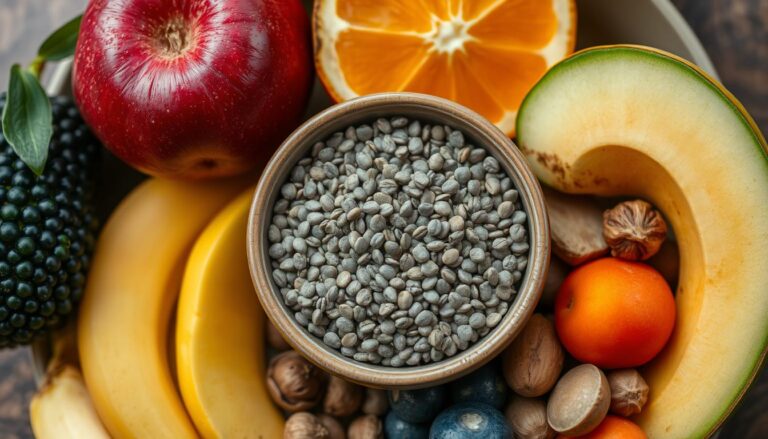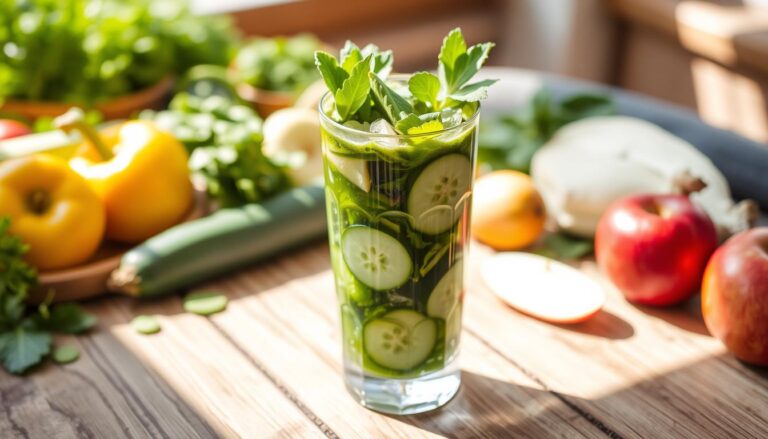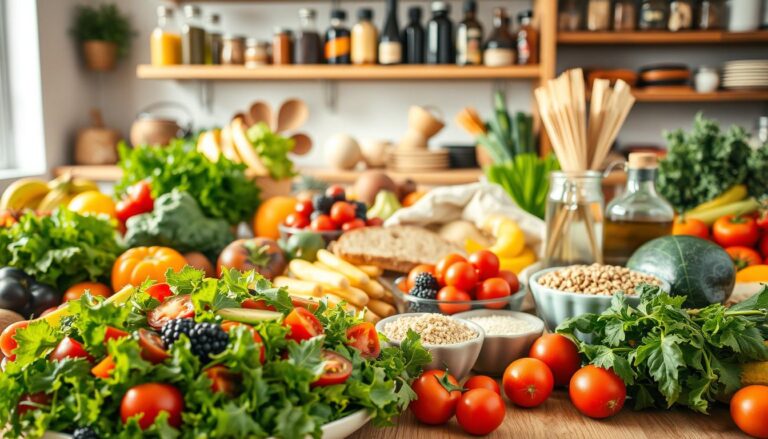Are you tired of diets that make you feel deprived and frustrated? Get ready for a weight loss journey that not only helps you lose weight but also feeds your body and mind. We’ll share the secrets to a diet that leads to lasting results without giving up your favorite foods or social life.
Key Takeaways
- Discover the power of a calorie deficit to unlock lasting weight loss
- Master the art of macronutrient balance for optimum nutrition
- Conquer portion control with simple yet effective techniques
- Boost your metabolism with proven, science-backed strategies
- Explore the benefits of intermittent fasting for weight loss and overall health
- Embrace clean eating and incorporate fat-burning foods into your diet
- Incorporate exercise routines that complement your weight loss goals
But the real question is, are you ready to change how you see food and unlock your dream body? Join us on this journey and let’s redefine what sustainable weight loss means.
Unlock the Power of a Calorie Deficit
Losing weight can seem hard, but the key is knowing about calorie deficits. This method is key for losing weight, as it helps your body use fat for energy. It’s the base of any successful weight loss plan.
Understanding Calorie Deficits
A calorie deficit means eating fewer calories than your body needs to stay at your current weight. This makes your body use stored fat for energy. By managing your calorie intake, you can start your metabolism and lose weight.
Calculating Your Caloric Needs
- Find out your basal metabolic rate (BMR), the calories your body needs at rest.
- Consider your activity level to figure out your total daily energy expenditure (TDEE), including calories burned from exercise and daily activities.
- Eat 500-1000 fewer calories than your TDEE to lose 1-2 pounds a week.
- Try low-carb diets or nutrition plans that boost metabolism to increase your calorie deficit and weight loss.
A lasting calorie deficit is crucial for keeping weight off. By understanding and using this principle, you can help your body lose weight naturally. This can change your body shape.
“The secret to weight loss is creating a calorie deficit, not simply cutting calories.”

Mastering Macronutrient Balance
For a successful weight loss diet, it’s not just about cutting calories. It’s about finding the right balance of protein, carbohydrates, and healthy fats. These nutrients are key to a nutrition plan that helps you lose weight and stay healthy.
Protein is vital for building muscle and keeping you full. Include lean protein sources like chicken, fish, or plant-based options in your meals. Carbohydrates give you energy, so choose complex, fiber-rich options like whole grains, fruits, and vegetables. Healthy fats, found in avocados, nuts, and olive oil, help with hormone regulation and fat burning.
Here are some guidelines for the right macronutrient balance:
- Protein: 20-30% of your total daily caloric intake
- Carbohydrates: 40-50% of your total daily caloric intake
- Healthy Fats: 20-30% of your total daily caloric intake
By following these guidelines and focusing on clean eating, you can make a nutrition plan that helps you lose weight and boosts your health. Remember, everyone is different, so adjust your macronutrient ratios as needed.
| Macronutrient | Recommended Intake | Key Benefits |
|---|---|---|
| Protein | 20-30% of total daily calories | Builds and repairs muscle, keeps you feeling full |
| Carbohydrates | 40-50% of total daily calories | Provides energy, supports brain function |
| Healthy Fats | 20-30% of total daily calories | Regulates hormones, promotes fat-burning |
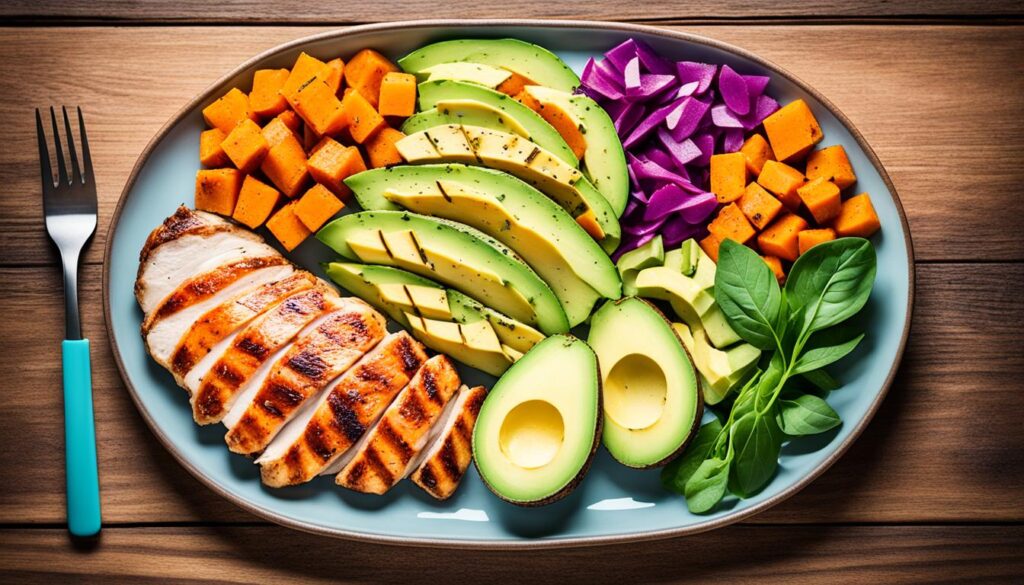
“The key to a successful weight loss diet is not just about cutting calories, but about finding the right balance of macronutrients to support your overall health and well-being.”
Portion Control: The Secret Weapon
Learning to control your portions is key to a successful weight loss diet. By using mindful eating and practical tips, you can balance your nutrients and calories. This way, you won’t feel like you’re missing out.
Mindful Eating Techniques
Mindful eating means eating with full attention. It helps you enjoy your food more and know when you’re full. Here are some tips for mindful eating:
- Slow down and chew your food well, enjoying the flavors and textures.
- Put down your utensils between bites to stop eating without thinking.
- Listen to your body’s hunger and fullness signals, stopping when you’re just right.
Portion Control Strategies
Managing your portion sizes is key for healthy eating and keeping a healthy weight. Here are some tips to help you control your portions:
- Use smaller plates and bowls to make your meals look and feel more filling.
- Measure and track your food, especially high-calorie items like oils, nuts, and dressings.
- Prepare and serve your meals ahead of time, portioning them out to avoid eating too much.
- Choose foods that are filling but low in calories to help you stay satisfied.
By using these portion control tips in your meal planning and healthy eating habits, you’ll be on your way to reaching your weight loss goals.
Metabolism Boosters for Weight Loss Diet Success
Boosting your metabolism is crucial for lasting weight loss. By adding metabolism-boosting techniques to your diet, you can increase your fat-burning ability. Let’s explore effective strategies to supercharge your metabolism and aid your weight loss.
Exercise Routines That Ignite Your Metabolism
Regular exercise is a top metabolism booster. Activities like high-intensity interval training (HIIT), strength training, and cardio workouts boost calorie burn. These exercises help you lose fat and build muscle, which raises your metabolic rate.
Nutrition Plans That Fuel Your Metabolism
What you eat affects your metabolism. Eating metabolism-boosting foods such as lean proteins, healthy fats, and fiber-rich carbs helps keep your metabolism high. Also, drinking plenty of water and eating smaller, more frequent meals aids in fat burning.
Lifestyle Factors That Enhance Metabolism
Exercise and nutrition aren’t the only factors that affect your metabolism. Good sleep, managing stress, and staying active all help your metabolism work better. These lifestyle changes work together to boost your weight loss efforts.

“Boosting your metabolism is like unlocking the secret to sustainable weight loss. Incorporate these strategies and watch your body transform.”
For weight loss diet success, combine targeted exercises, nutrient-rich foods, and healthy habits. Embrace these metabolism boosters to increase your fat-burning potential.
The Art of Intermittent Fasting
Unlock the power of your metabolism with intermittent fasting. This method is changing the game for weight loss. It’s known for boosting metabolic function and supporting health. Adding it to your weight loss diet can take your results to the next level.
Exploring Intermittent Fasting Methods
Intermittent fasting comes in many forms, each with its own benefits. Let’s look at some popular methods to see which fits your lifestyle:
- Time-Restricted Eating: Eat only during a set time, like 8-12 hours a day, and fast the rest of the time.
- Alternate-Day Fasting: Switch between eating normally and fasting on different days.
- The 5:2 Diet: Eat normally for five days and cut calories to 500-600 on the other two days.
Benefits of Intermittent Fasting
Adding intermittent fasting to your nutrition plan brings many benefits. It can help you lose weight and improve your health:
- Metabolism Boost: It can make your metabolism faster, helping you burn fat and lose weight.
- Reduced Inflammation: Fasting lowers inflammation, which is linked to chronic diseases and weight issues.
- Improved Insulin Sensitivity: It makes your body better at using insulin, keeping blood sugar levels in check.
Try intermittent fasting to change your weight loss journey. It’s a powerful tool for boosting your metabolism and achieving lasting results.
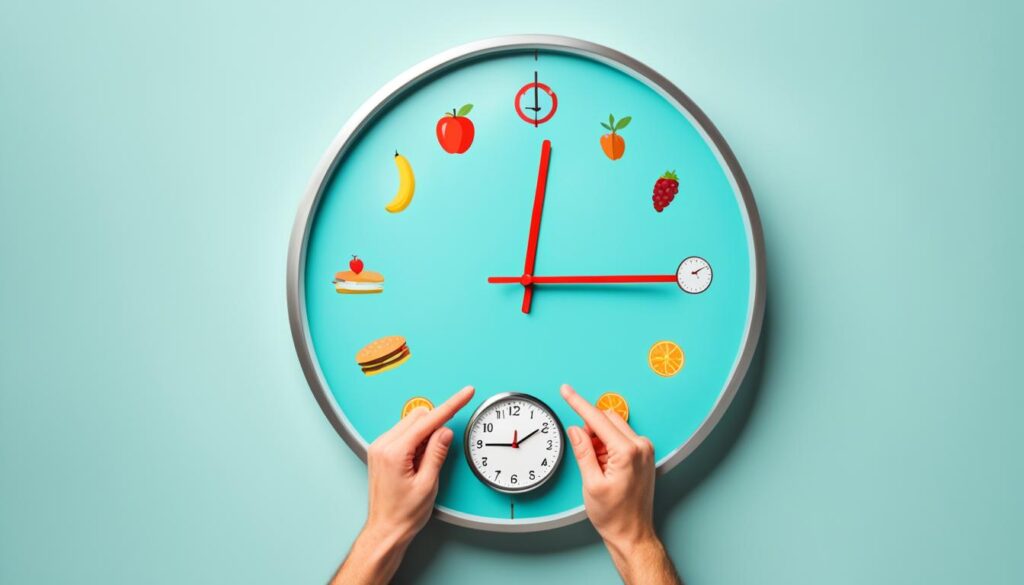
Clean Eating: The Foundation of a Healthy Weight Loss Diet
Starting a weight loss journey is a big step, and the key is clean eating. Clean eating means eating whole, unprocessed foods. This approach can help you lose weight in a lasting way. By eating foods full of nutrients, you give your body what it needs to stay healthy.
Clean eating is all about eating real foods as they are. You should eat lots of fruits, veggies, lean meats, whole grains, and healthy fats. These foods help you lose weight and keep you full of energy. They also make you feel good overall.
To start clean eating for weight loss, try these tips:
- Prioritize whole, unprocessed foods: Choose fresh fruits, lean meats, whole grains, and healthy fats like avocado and nuts.
- Limit processed and refined foods: Avoid foods high in sugar, salt, and processing. These can hurt your weight loss efforts.
- Plan and prepare your meals: Spending time on meal planning and cooking helps you make better choices and control your portions.
- Try new recipes: Look for clean eating recipes that you like. This keeps your meals interesting and fun.
Make clean eating the base of your diet for weight loss. This way, you’ll reach your goals and develop a healthier relationship with food. Clean eating is a powerful way to manage your weight for the long term.
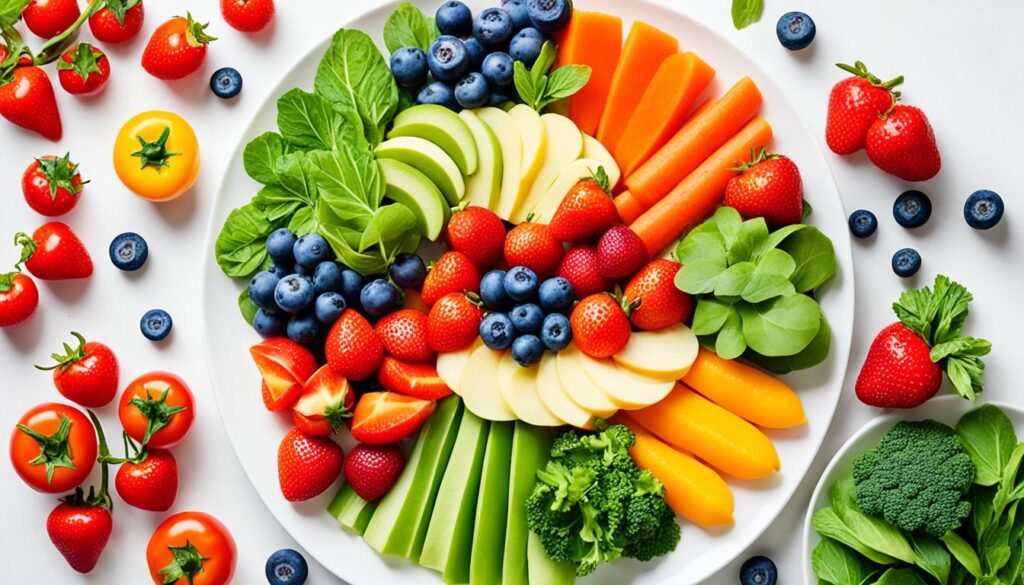
| Clean Eating Benefits | Processed Foods Drawbacks |
|---|---|
| Nutrient-dense, whole foods | Lack of essential nutrients |
| Supports weight loss and management | Promotes weight gain and obesity |
| Boosts energy and overall well-being | Linked to chronic health issues |
| Promotes a healthy relationship with food | Encourages unhealthy eating habits |
“Eating clean is not about deprivation; it’s about fueling your body with the nourishment it craves.”
Let clean eating change your weight loss journey. Make it holistic, sustainable, and rewarding.
Fat Burning Foods to Supercharge Your weight loss diet
Want to lose weight? It’s not just about cutting calories. Adding fat-burning foods to your diet can help you lose weight faster and boost your metabolism. Let’s look at the best foods that should be in your diet.
Spicy Thermogenic Foods: Chili peppers, cayenne, and other spicy foods have a compound called capsaicin. This can make your body burn calories faster. Add these spicy foods to your meals for a metabolism boost.
- Chili Peppers
- Cayenne Pepper
- Jalapeños
Protein-Rich Powerhouses: Lean proteins like chicken, turkey, and fish are filling and help your body burn more calories. Make these foods a big part of your diet.
| Food | Protein Content (per 100g) |
|---|---|
| Chicken Breast | 31g |
| Salmon | 25g |
| Eggs | 13g |
Fiber-Rich Superstars: Foods high in fiber, like leafy greens, berries, and lentils, keep you full longer. This can help you eat less and support weight loss. Add these fiber-rich foods to your meals and snacks.
“Eating a diet rich in fiber-rich foods can be a game-changer for weight loss. The fiber helps keep you feeling satisfied, reducing the likelihood of overeating.”
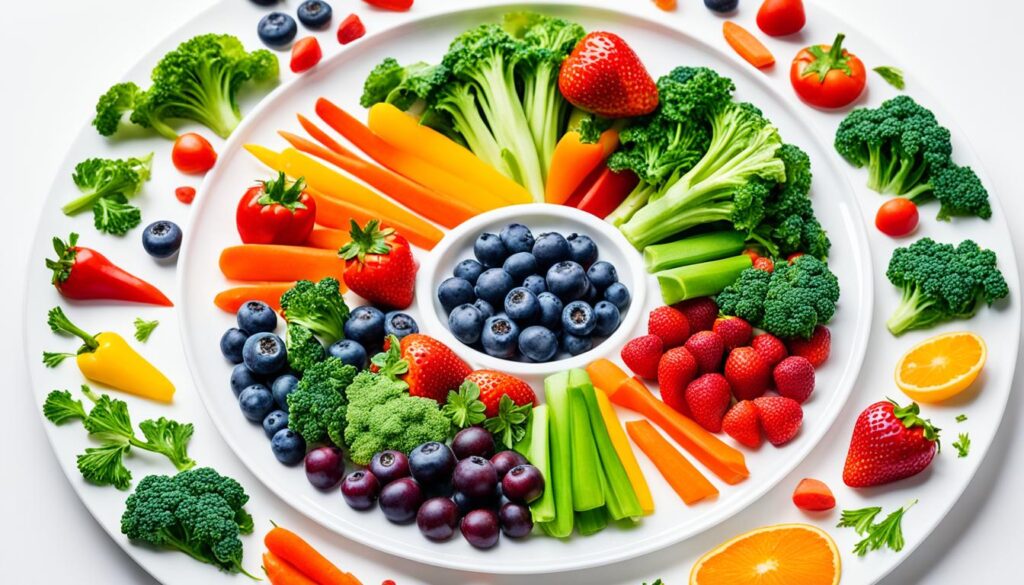
By adding these fat-burning foods to your diet, you can boost your weight loss efforts. Remember, a balanced diet is key to losing weight for good.
Incorporating Exercise Routines
Getting the most out of your weight loss diet means adding exercise routines. Mix a calorie-aware diet with specific fitness plans to increase your metabolism, burn fat, and shape a leaner body. Let’s look at how cardio and strength training can help you lose weight.
Cardio for Weight Loss
Cardio is key for losing weight effectively. It raises your heart rate and boosts your body’s fat-burning process. Add different cardio activities to your routine, like:
- Brisk walking
- Jogging or running
- Cycling
- Swimming
- Jumping rope
Try to do at least 150 minutes of moderate-intensity cardio each week. Or, aim for 75 minutes of high-intensity cardio for better results.
Strength Training for Metabolism Boost
Strength training goes hand in hand with cardio to help you lose fat faster. It builds lean muscle, which helps you burn more calories even when you’re not moving. Add exercises like:
- Resistance training with weights or resistance bands
- Bodyweight exercises like push-ups, squats, and lunges
- Compound exercises that work many muscles at once
Do two to three strength training sessions a week. Make sure to rest and recover well between them.
By combining cardio and strength training with your diet, you can achieve a healthier, toned body. This approach will boost your metabolism and fitness level. Embrace this powerful combination to reach your weight loss goals.
Conclusion
This guide has shown you that losing weight is not about quick fixes or trends. It’s about making lasting changes in your life. By learning about calorie deficits, balancing macronutrients, and boosting your metabolism, you’ve found the secrets to keeping weight off for good.
Success comes from making habits that fit into your everyday life. Eating right, controlling portions, and exercising regularly are key to lasting weight loss. Enjoy the process, celebrate your wins, and see how these changes improve your health and happiness.
Start this new journey with confidence, armed with the knowledge and tools to change how you see food and fitness. Aim to make weight loss a part of your life forever. Here’s to your success, and may your future be filled with health, strength, and self-confidence.
